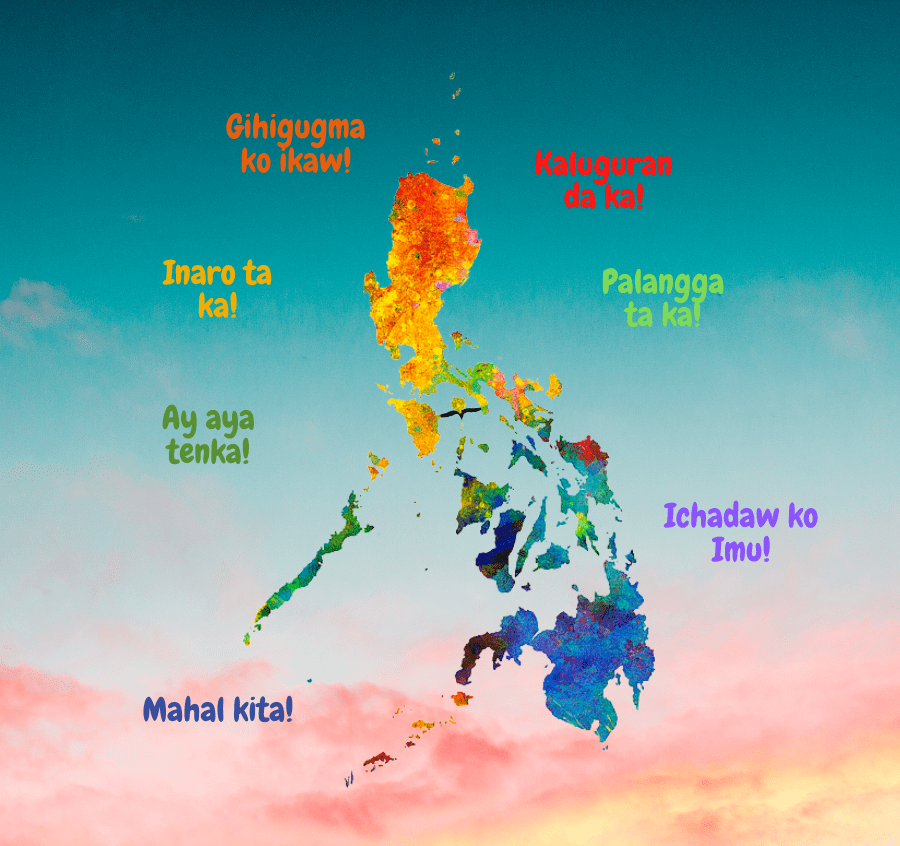Feel-Good Languages in the Philippines That Always Leave Me in Great Awe

The Philippines is where different cultures, religions, and languages are present side-by-side. It is home to more than 170 languages. This versatility shows the genius of Filipinos, and it is something to be proud of.
On the other side of this reality, if you ask younger generations, the ability to speak one native or regional language that is not Filipino or English is already a job well done in living a patriotic life. It is because most of us can barely even understand our ancestors’ language, more so other regional languages.
How it feels to hear different languages in the Philippines as a kid

Growing up in an urban city, I always find it hard to relate to older people’s language versatility. Most people in our neighborhood commonly speak three languages fluently, which seems to be the standard count. They always find a way to converse and understand each other magically despite coming from different provinces.
Another thing is whenever my relatives gather and chatter in their native languages. I would always want to be in the scene as it feels like music to my ears. I can understand a few words that hint to me what they’re talking about. However, those teeny tiny bits don’t seem to create the magic their language did them.
I’m sure this feels relatable for many teens and children of this generation who were taught to speak only Filipino or English and are not familiar with the language of their family’s origin place.
Diversity in mind while achieving unity
After several foreign occupations that infiltrated Filipinos’ collective way of life, the quest for a semblance of national identity and particularity was stronger than ever. Hence, the existence of a national language.
As it turns out, having an established national language is not enough to achieve the goal that was from the beginning – to unite us as a nation and build our identity. While we were trying to achieve unity, we forgot our country’s important characteristic – diversity. We can’t disregard that different communities and regions have their language and culture. Nobody is in a position to take those away from them.
As for me, I want to see the beauty behind these cultures and languages.
Three languages in the Philippines that I want to learn
Hiligaynon
Ever since I was a kid, I always dreamt of being able to speak and understand our native language. When our family reunites or celebrates holidays, my relatives from different places in the Philippines always greet and compliment me in Hiligaynon. The first time I heard phrases like “Palangga ta gid ka” (I love you), no one told me what it meant, but somehow I understood. I felt like the Ilonggo blood was naturally in me as I understood some words.
When my aunties, uncles, and parents catch up on things in life, I always want to listen though I cannot understand most of what they say. So, while they were doing their things, we, the kids, would imitate them, trying to incorporate sweetness in every phrase, even rude ones. It just brings a lot of fun during those moments.
Hiligaynon is the primary language of Hiligaynons, a subgroup of the Bisaya people. It is also often referred to as Ilonggo. However, if you tell your Hiligaynon friend “Kabalo ko mag Ilonggo,” (I know how to speak Ilonggo), s/he might correct you because Ilonggo is a term used to distinguish people and not a language.
Batangueno
That feel-good accent was my dream too. “Ala Eh! Aywan ko lang sa iyo.” Admit it. You also read it in a Batangueno accent. Sometimes, people make fun of it, but to be honest with you, it’s so much more satisfying to listen and speak.
Batangan or Batangas Tagalog is used mainly in the province of Batangas and sometimes used in neighboring provinces like Cavite, Laguna, and Quezon.
Cebuano
Did you also wish to have lived in Cebu, or is it just me? How about being fluent in Cebuano? It is often called Bisaya, and Cebuanos will tell you it’s okay if that’s what you want to call their language as long as you’re not making fun of it.
Whenever I hear people conversing in Bisaya, I can feel the Cebuano pride they bring along. They have a strong and intense yet sweet accent that makes me want to join them. Unfortunately, I cannot speak their language.
The 1960 census showed how Cebuano used to be the No. 1 language in the Philippines. Filipinos from greater parts of Visayas and Mindanao used to speak the language.
If you also want to learn these native languages, you can ask your friend to teach or look for an app. There are plenty of them, for sure! This is one way to unleash that Filipino in you.
Micas pursues writing and photography as a hobby and as an instrument to feature the life of people often ignored in society. She aspires to be a journalist and an all-around cool girl someday. She's in the process of making herself eloquent in writing and speaking.






